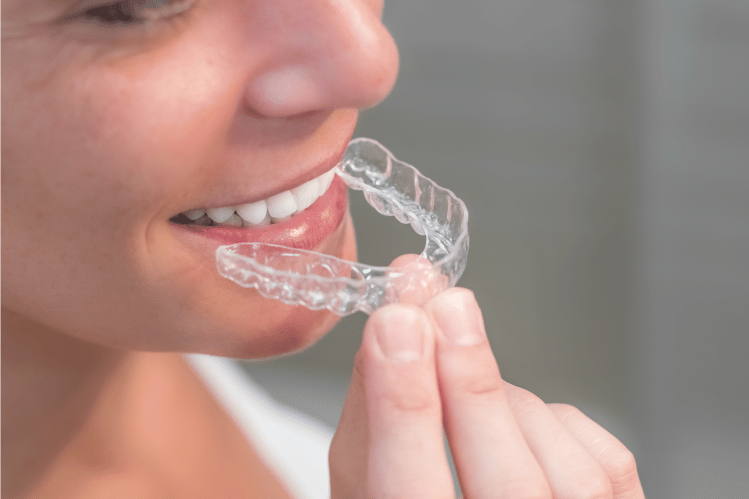
Introduction
Age is just a number, and that couldn't be more accurate when it comes to improving oral health. Over time, more adults have been embracing orthodontic treatments to enhance not only their smiles but also their overall oral health.
No longer is orthodontics seen as a service solely for children and teenagers; adults of all ages are now benefiting from these transformative treatments. In this blog post, we will delve into various orthodontic treatment options available for adults and discuss how they can improve oral health at any age.
The Importance of Orthodontics in Adulthood

Orthodontics is more than just creating a picture-perfect smile. It's about improving the functionality of your mouth and preventing future oral health problems. Misaligned teeth can cause several issues such as difficulty in chewing, improper bite, increased risk of tooth decay, gum diseases, tooth wear, and even speech impediments.
In adults, these issues can progressively worsen and lead to more serious problems like temporomandibular joint disorder (TMJD), if left unaddressed. That's why adult orthodontics is not just about cosmetic enhancement but also about improving oral health and quality of life.
Orthodontic Treatments for Adults
Here are some of the orthodontic treatment options available for adults:
Traditional Braces:
These are the metal brackets and wires that probably come to mind when you think about orthodontic treatment. Even though they might not be aesthetically pleasing, they're incredibly effective at correcting a wide range of orthodontic issues.
Ceramic Braces
These work like traditional braces but are made of clear or tooth-colored ceramic, making them less noticeable.
Lingual Braces:
These are similar to traditional braces, but they're placed on the backside of the teeth, making them invisible to others.
Predictable Results
Advanced technology allows for precise treatment planning, giving patients a clear understanding of the expected results.
Clear Aligners:
These are virtually invisible, removable braces that are perfect for those who want an inconspicuous orthodontic solution. Brands like Invisalign have popularized this method.
Self-ligating Braces:
These use a specialized clip instead of elastics to help the archwire guide teeth into place. They require fewer dental visits and cause less discomfort.
Orthodontic Surgery:
For severe cases, surgical orthodontics (or orthognathic surgery) may be necessary to correct conditions that cannot be treated with braces alone.
How Orthodontic Treatment Improves Oral Health
Orthodontic treatments can drastically improve oral health in several ways. First, by straightening crooked teeth, it becomes easier to clean between the teeth, reducing the risk of cavities and gum disease. Correcting misaligned bites also reduces the pressure on certain teeth, preventing excessive wear and possible tooth damage.
Additionally, orthodontic treatments can also help improve speech and chewing ability, significantly improving the quality of life. Importantly, investing in orthodontics can prevent more expensive and invasive dental treatments down the line.
Conclusion
Conclusively, it's never too late to improve your oral health through orthodontic treatment. From traditional braces to clear aligners, there are various options available to suit your needs and lifestyle.
Remember, orthodontic treatments are not just about getting a beautiful smile, but also about maintaining healthy teeth and gums, which is crucial at any age. If you're considering orthodontic treatment as an adult, make sure to consult with an orthodontist to discuss the best treatment options for your specific needs and oral health goals.
Take that step towards a healthier and happier smile – because you're worth it, no matter your age! Visit Smilepath New Zealand now for more details.
FAQs
There's no upper age limit for orthodontic treatment. As long as your teeth and gums are healthy, you can consider orthodontic treatment. It's always best to consult with an orthodontist to discuss your specific situation and treatment options.
While orthodontic treatments are generally safe, there are some risks, as with any medical procedure. These can include discomfort, root resorption, and gum or tooth damage. However, these risks are usually minor and manageable. Your orthodontist will discuss these potential risks with you before you decide on a treatment plan.
Treatment time can vary greatly depending on the complexity of the orthodontic issue. Adult bones are no longer growing, which may prolong the treatment process. However, with advancements in orthodontic technologies, many adults find their treatment times comparable to those of younger patients.
Clear aligners, such as Invisalign, can be just as effective as traditional braces for treating many orthodontic issues. However, for some complex cases, traditional braces or other forms of treatment might be more effective. Your orthodontist will recommend the best treatment option based on your unique situation.
Modern orthodontic treatments are designed to be as unobtrusive as possible. Clear aligners are removable for eating and cleaning, and ceramic or lingual braces are less noticeable than traditional metal braces. However, you may need to make some minor adjustments to your oral care routine or diet.
Orthodontic treatments can significantly improve your oral health by straightening misaligned teeth, which can make cleaning easier and more efficient, reducing the risk of cavities and gum disease. They can also correct bite issues, reducing wear on certain teeth and the risk of TMJD.
Some discomfort is expected during orthodontic treatment, especially when braces are first put on or adjusted. However, this discomfort typically subsides after a few days. Pain relievers can help manage this discomfort, and new technologies are continually making orthodontic treatments more comfortable.


 Australia
Australia New Zealand
New Zealand Malaysia
Malaysia English
English Portuguese
Portuguese English
English English
English English
English English
English English
English Canada
Canada